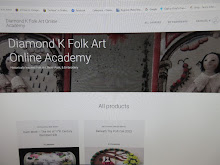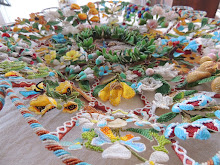c1855-60 Child or Dolly's Chemise 146.2002.14
Today's Museum Monday lucky number is 146! A quaint little girls white cotton chemise, entirely hand stitched in minute little stitches. There are 5 Clambroth glass buttons around the waist, for a petticoat to be buttoned on to.It has several really neat features, the hand stitched ruffle around the neckline and sleeves is marvelous....there are underarm gussets with reinforced bands under the arms..... ( pictures I left large so you can see the tiny stitches). One cannot say for certain if this is a small girl's piece, or if it was made by a girl for her dollye~ which was quite common, to give the girls practical use of all the stitches they had been taught at girl's school. The stitching on these pieces is always immaculate, tiny, fully hand worked. There are usually embroidered initials to go along with~ a young ladye would perfect her stitching in miniature for dollye, before she was on to larger things for herself or others.
What I would like to focus on, for this post, is the one aspect of this chemise that is not hand stitched. The simple strip of whitework embroidery down the center front. Its attached with perfect tiny stitches....above is a picture of the back of the embroidery. If you are ever in question if an embroidery is hand or machine made, one need only examine the back. You can click on the picture to enlarge it, and note the carriage of the threads is in the exact same place on each reoccurring motif. Of coarse it also helps to know when the first embroidery machine was made~ 1829 by Joshua Heilmann to be exact. He sold his machine to the Swiss, and by the 1850s, machine made embroidery was all the rage, having put hundreds if not thousands of cottage industry workers out of work. And when I say machine made embroidery, don't automatically think it was crude....not in the slightest. It can sometimes take an expert eye to discern a machine made embroidered piece from a handmade one.
The process was not exactly simple either...above is a postcard c1905 of workers at an embroidery machine. The man sitting on the left is tracing the embroidery pattern with the long arm, which in turn transfers the design to several sets of needles that embroider the motifs at 1/6th the size of his pattern template. I dug around and found a video of the last Schiffli machine in use, by the Manchester Metropolitan University ~ its hard to tell, but the fabric is what moves, the needles are stationery. By the 1860s there were literally thousands of these machines in use~ one can only imagine the noise!!!


























No comments:
Post a Comment